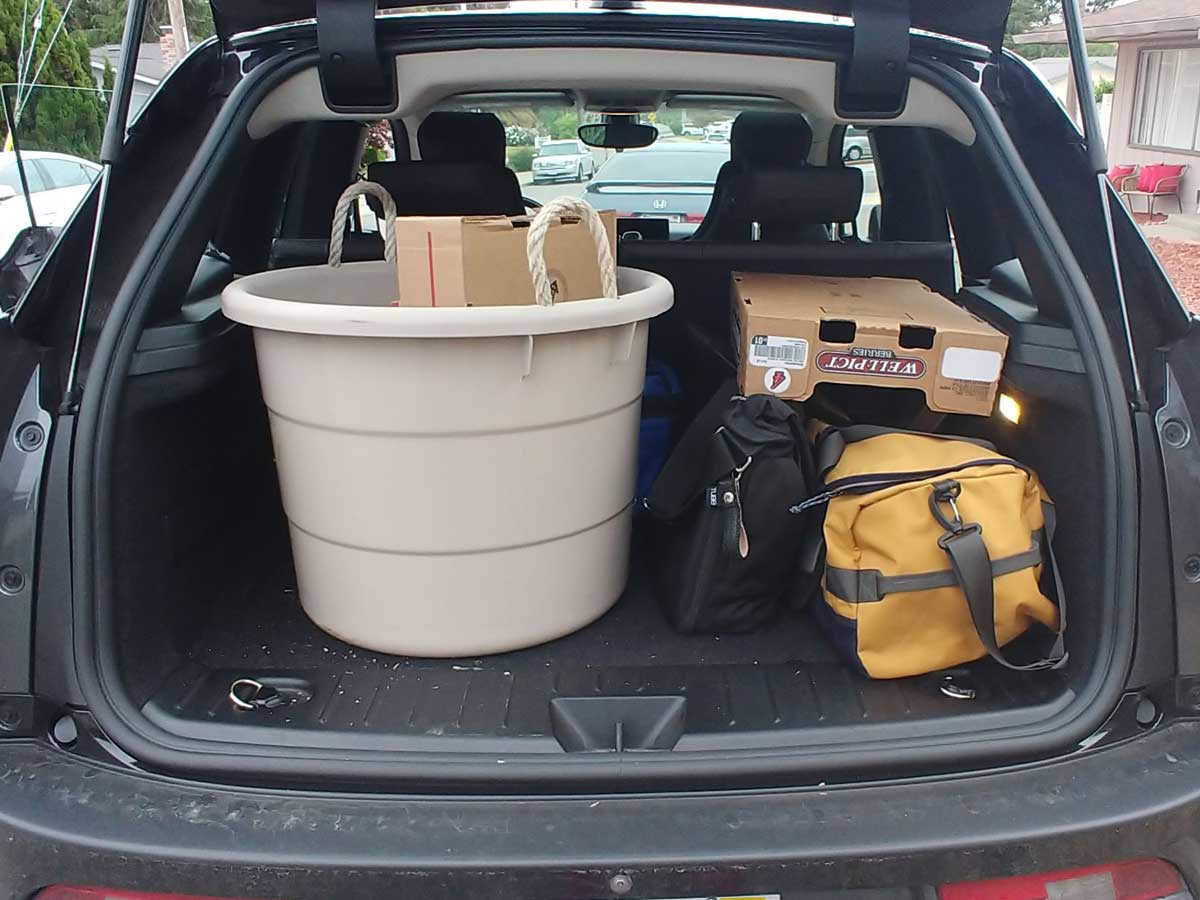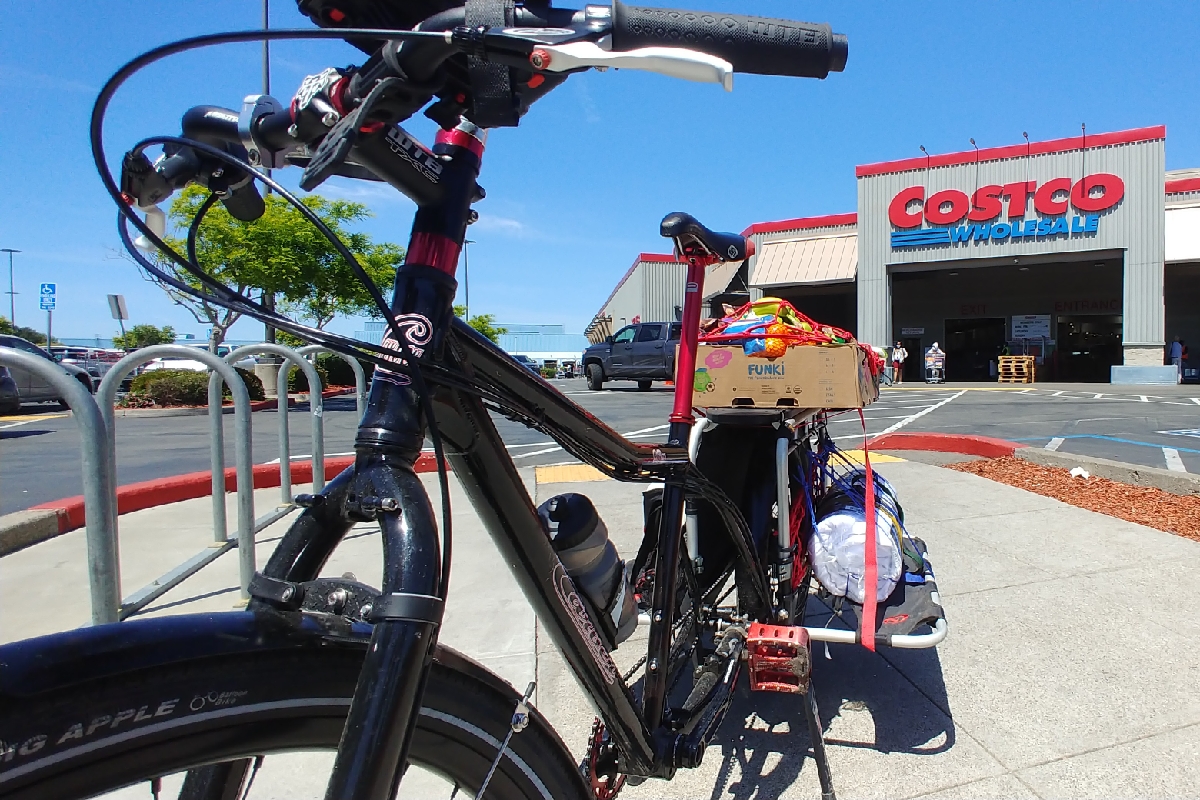This is one of those backyard ice tubs for cold drinks. I think they're all similar size. I actually used this as a dog washing tub, but our house has been sans pets for a while so time for it to go.
It fits in the i3 trunk comfortably by clicking the back seat into the upright detent. I tried putting the seat back to the normal position, but found that the lip of the tub rubbed the top of the saet back, and I didn't want a hole in the leather.

It fits in the i3 trunk comfortably by clicking the back seat into the upright detent. I tried putting the seat back to the normal position, but found that the lip of the tub rubbed the top of the saet back, and I didn't want a hole in the leather.
















